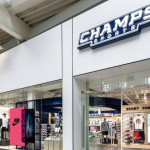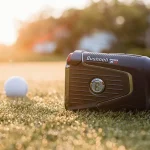Foot Locker, Inc. pointed to a continued difficult retail athletic environment and a softening sales trend in the U.S. market as the primary reasons for a decrease in comp store sales and total sales that were flat for the period. The company also saw margins shrink for the quarter as Foot Locker increased markdowns to bring aged inventories in line. Based on the weaker-than-expected second quarter results, Foot Locker reduced full year EPS guidance to be in the range of $1.44 to $1.54 per share, down from earlier estimates in the range of $1.75 to $1.85 per share.
The earnings results for the quarter and the full year guidance both include an eight cents per share charge to write-down assets at 69 stores in Europe, primarily the U.K.
Total company comp store sales were down 1.3% for the quarter, as total U.S. comp store sales improved in low-single-digits and the International sales comped down in the mid-single-digits. Overall comps were up in low-single-digits in May, but declined in low-singles for June and were down in low- to mid-single-digits in July. Average selling prices were up in low- to mid-single-digits in Q2, but unit sales were down for the period. Excluding the effect of foreign currency fluctuations, total sales for the quarter decreased 1.2%.
The U.S. Foot Locker operation, which includes the Foot Locker, Lady Foot Locker, and Kids Foot Locker nameplates posting “essentially flat” comps for the period. The Champs and Footaction businesses were both up in mid-single-digits for Q2 and the DotCom business increased in low-to mid-singles.
Footwear sales at the flagship Foot Locker chain were led by increase in running and low-profile styles in mens as well as the womens and kids categories. Basketball footwear sales were “essentially flat” for the quarter. Apparel sales were said to be “a little softer” than footwear, with declines in licensed apparel offsetting gains in branded and private label. At Lady Footlocker, footwear again outpaced apparel, with increased sales in court, fitness, and cross-training leading the way on the footwear side and private label posting gains in apparel. Kids Foot Locker posted the strongest performance of the three chains, with “solid increases” coming out of the basketball and cross-training categories.
The sales gains at Champs are expected to help generate a “solid profit increase” for the year. Footwear sales at Champs were said to be “reasonably balanced” across many categories, with increasing strength in mens casual and childrens footwear, while private label drove the apparel gains. Sales are expected to approach $1 billion for the year with nearly a double-digit profit margin. Footaction generated “solid sales gains” in both footwear and apparel, with basketball identified as the key driver on the footwear side and branded and private label both helping in apparel.
Matt Serra, Foot Locker, Inc.’s chairman and CEO, said the slowdown in the U.S. in July were primarily the result of shifts to August of the back-to-school schedule in Florida and Puerto Rico as well as tax-free weekend in Georgia. He said that U.S sales had “picked up briskly” in August where BTS is in full swing. Mr. Serra said the increase in average selling prices in the U.S. was due to increased sales of low-profile and marquee product. He said that their ability to play off trends in the Europe stores enabled them to stock their U.S. stores with compelling low-profile product ahead of the competition.
On the International side, comps declined about 10% in the Europe business, while Canada comps were up in low-singles and Asia Pacific comped up in the mid-single-digit neighborhood.
Mr. Serra said that while footwear in Europe saw a mid-single-digit decline, the region actually saw some improvement in the footwear business in Q2 that was offset by double-digit declines in the apparel business. Private label apparel sales were said to be solid in Q2 in Europe and stronger licensed apparel sales, driven by World Cup jersey sales, were not significant enough to offset the broader declines.
The European business posted a high-single-digit profit margin for the period.
Footwear sales and margins are apparently starting to stabilize in Europe and the region is now starting to see footwear sales increasing in high-single-digits. Much of this improvement is seen coming from a shift to more low-profile product, which now makes up more than 40% of the product mix there. The company is driving toward a 50% mix of low-profile footwear in Europe. Last year at this time the mix was roughly 18% to 20% low-profile.
In the U.S., low-profile is now about 25% of the mix.
The company is also ramping up Nike Pro apparel in Europe, expanding on the initial 50 door test to over 250 doors by mid-September, but the apparel trend there is seen as more street wear rather that athletic apparel as consumers opt for striped polo shirts and cargo shorts and pants for back-to-school.
| Foot Locker, Inc. | |||
| Second Quarter Results | |||
| (in $ millions) | 2006 | 2005 | Change |
| Total Sales | $1,303 | $1,304 | -0.1% |
| GP % | 27.7% | 28.9% | -120 bps |
| SG&A | 21.0% | 20.3% | +60 bps |
| Net Income | $14.0 | $44.0 | -68.2% |
| Diluted EPS | 9¢ | 28¢ | -67.9% |
| Inventory* | $1,477 | $1,379 | +7.1% |
| Comps | -1.3% | +1.3% | |
| *at quarter-end | |||













